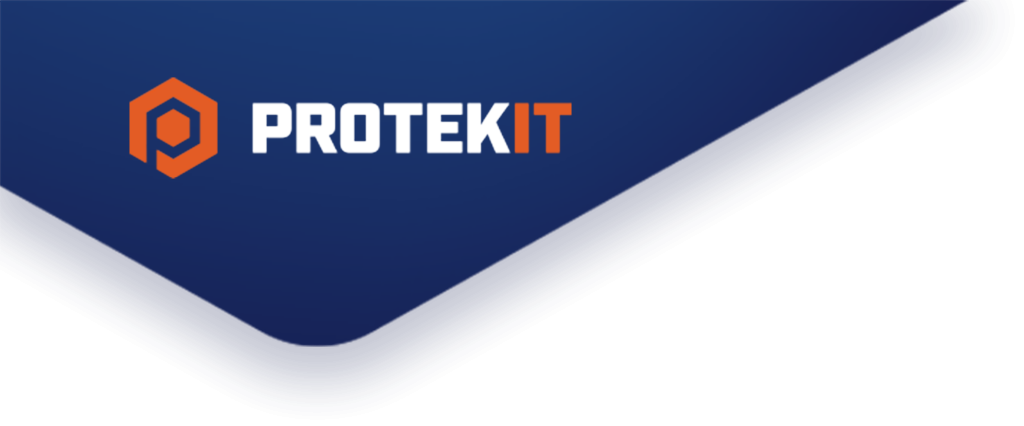Business managers and owners must stay current with cyber threats to protect their company’s sensitive data.
As cyber threats become more sophisticated, strategies to combat them must also evolve. Here’s a closer look at what 2024 has in store for data security and actionable insights for business leaders.
Recent surveys highlight that over 70% of business professionals recognize significant benefits from their data privacy efforts. It’s clear that investing in data security isn’t just necessary; it’s advantageous.

Key Areas to Watch in Data Security
1. Leveraging AI and Machine Learning in Security
Artificial Intelligence (AI) and Machine Learning (ML) are revolutionizing how businesses, especially small and medium-sized enterprises, manage and mitigate cyber threats. By integrating AI and ML, businesses can enhance their security in several practical ways:
Enhanced Threat Detection: AI and ML technologies can sift through enormous datasets quickly, identifying anomalies that might indicate a security breach. This capability allows businesses to detect threats faster than traditional methods, reducing the window of opportunity for attackers. For instance, AI systems can spot unusual login attempts or suspicious data access patterns that might otherwise go unnoticed.
Predictive Analytics: AI tools analyze historical data on security breaches to predict and flag potential future attacks. This proactive approach helps businesses prepare and prevent incidents before they occur. For example, if an AI system notices that certain types of phishing emails have previously led to breaches, it can alert employees about similar threats more swiftly.
Automated Response: AI can take immediate action against detected threats, such as isolating affected systems, blocking malicious IP addresses, and initiating other security protocols. This automation speeds up the response time and significantly reduces the manual labor involved in handling incidents, which is crucial during off-hours or when IT staff is limited.
Implementing these technologies, however, requires expertise. Protek-it can bridge this gap for your business. We provide tailored AI security solutions that fit your needs, backed by a team of experts who ensure these systems are integrated smoothly with your existing infrastructure.
2. The Persistent Threat of Ransomware
Ransomware continues to be a significant challenge for businesses in 2024. Here’s what this means for business owners:
More Targeted Attacks: Cybercriminals are now more strategic in their approach, choosing to attack critical infrastructure and businesses holding large volumes of valuable data. For a business, this means that if you store sensitive customer information or proprietary data, you’re at a higher risk of being targeted. These focused attacks can lead to substantial financial losses, operational disruptions, and damage to your reputation.
Ransomware-as-a-Service (RaaS): The rise of RaaS has lowered the entry barrier for cybercrime, enabling even those with limited technical know-how to launch ransomware attacks. This trend has expanded the pool of potential attackers, increasing the likelihood that businesses of any size could be targeted.
Double Extortion: In addition to encrypting data, attackers threaten to leak it publicly if their demands are unmet. This tactic adds an extra layer of coercion, forcing businesses to weigh the cost of the ransom against the potential fallout from a data breach, including legal consequences and loss of customer trust.
3. Proactive Data Governance
Proactive data governance is becoming an important piece of modern cybersecurity strategies, focusing on embedding security measures early in the data lifecycle. Here’s what this means for your business:
-
Early Integration of Security Measures: The shift towards implementing security controls from the beginning of data collection is crucial. This approach secures the data and builds a foundation of trust with your customers, who are increasingly concerned about the security of their personal information.
-
Cloud-Centric Security: As businesses continue to transition to cloud-based operations, ensuring security across all data stages becomes more important. Integrated security solutions for the cloud can protect your data from unauthorized access and threats, regardless of where the data resides or travels. This consistent protection is key when data mobility often introduces vulnerabilities.
-
Compliance with Strict Regulations: With the enforcement of stricter data privacy laws like GDPR and CCPA, compliance is more than a legal requirement—it’s a critical component of your business or nonprofit’s operations. Effective data governance helps you avoid costly penalties and enhances your company’s credibility and reliability in handling sensitive information.
4. Adopting a Zero Trust Security Framework
As traditional security perimeters prove inadequate, the Zero Trust security model is quickly becoming more popular for businesses. This includes:
Continuous Verification: In the Zero Trust framework, every access request is rigorously verified, whether it originates from inside or outside the network. This means that just because someone is already inside the network doesn’t automatically grant them access to all resources. This thorough verification helps prevent unauthorized access and can significantly diminish the chances of a security breach.
Least Privilege Access: This principle involves granting users the minimum level of access necessary to perform their job functions. By limiting access rights, the potential damage from a breach can be significantly contained. If an account is compromised, the attacker can’t access critical data beyond the limited scope allowed to that user, thus minimizing the overall impact on the business.
Multi-Factor Authentication (MFA): MFA requires users to provide multiple pieces of evidence to verify their identity, which typically includes something they know (like a password), something they have (like a smartphone app), and something they are (like a fingerprint). This layered defense makes unauthorized access much harder, protecting your systems even if a password is compromised.
5. Protecting Biometric Data
As biometric technologies such as facial recognition and fingerprint identification become more prevalent, their protection becomes a critical aspect of business security. Here’s what you need to know about safeguarding this sensitive information:
- Secure Storage Practices: Biometric data is extremely sensitive because it is uniquely personal and impossible to change. Encrypting this data is essential to prevent unauthorized access. By using strong encryption methods, businesses can ensure that even if the data is intercepted, it remains unreadable and secure.
Adherence to Regulations: The legal landscape around biometric data is tightening, with new regulations aiming to protect individual privacy. Businesses must not only comply with these regulations but also operate with transparency and ensure they have clear, explicit consent from users to collect and use their biometric data. This involves careful handling and clear communication about how and why biometric data is used, stored, and protected.
How your Business Can Stay Prepared
Feeling overwhelmed by the fast changes in cybersecurity threats? Here are some simple, practical steps you can take to keep your business secure:
- Stay Informed: It’s important to stay updated on the latest cybersecurity developments and emerging threats. To stay ahead, subscribe to trusted cybersecurity news sources, attend relevant webinars, and participate in industry conferences.
- Invest in Training: Building a knowledgeable team is your first defense against cyber threats. Regular training sessions should be a priority, ensuring that every team member understands the latest cybersecurity practices and how to apply them.
- Review and Update Security Policies: Cyber threats evolve, and so should your policies. Regularly reviewing and updating your security strategies is important to respond to new vulnerabilities effectively.
- Embrace Advanced Security Technologies: Leverage cutting-edge technologies to enhance your cybersecurity. Investing in solutions like advanced firewalls, intrusion detection systems, and secure access management tools can significantly strengthen your security posture.
- Regular System Testing: Routine testing of your security measures is crucial. Speak to your IT Services Provider about conducting penetration tests, vulnerability scans, and security audits to identify weak spots in your infrastructure. This proactive approach allows you to address vulnerabilities before they can be exploited.
Start with a Data Security Assessment
The data security landscape in 2024 may seem intricate, yet it’s manageable with the right approach, and the right cybersecurity team by your side.
Starting with a comprehensive data security assessment is an effective way to bolster your readiness! Reach out today to arrange an assessment and strengthen your business’s defense.



